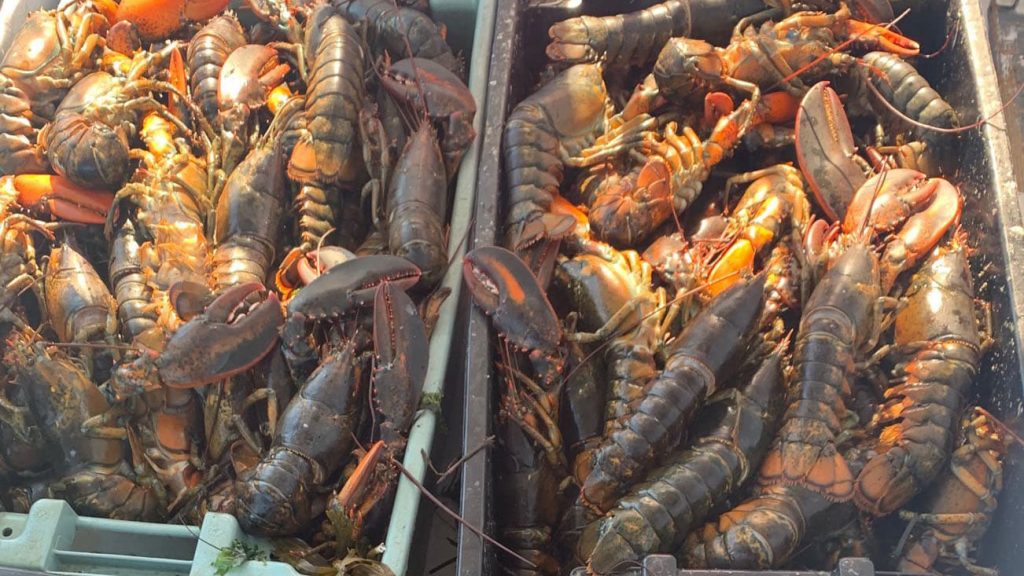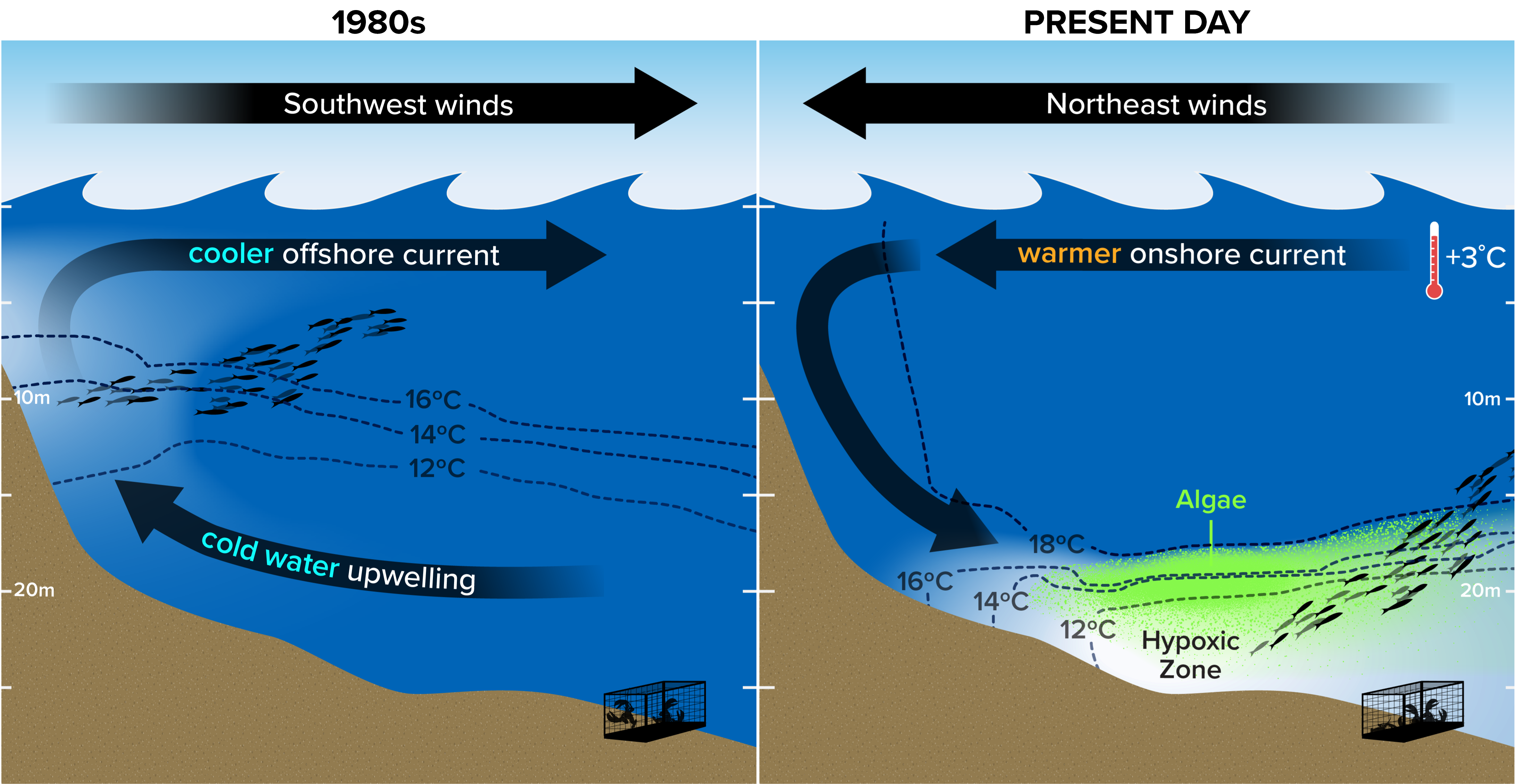Unraveling the Mystery of Lobster Die-offs in Cape Cod Bay

In the summers of 2019 and 2020, lobstermen working in Cape Cod Bay hauled up their lobster traps to find most of them dead. What caused these unprecedented deaths?
With funding from Sea Grant, WHOI Associate Scientist Malcolm Scully and his team developed a model using numerous datasets to unravel this mystery. The culprit, they found, was low dissolved oxygen, or hypoxia, in the Bay, and these events connected to climate-related changes within the physical environment.
Over the last 40 years, Cape Cod Bay has felt the effects of climate change. The surface waters have warmed. In the summer, strong winds from the southwest have become less common while winds from the northeast have increased substantially. Together, the warming water and shifting wind pattern make the Bay more stratified, with surface water less likely to mix with colder, denser deep water.

Scully’s model shows that these changes in the physical environment make hypoxia in Cape Cod Bay more likely. It illustrates that the altered environment set up the ideal conditions for a bloom of Karenia mikimotoi, a species of algae new to the region. After the algae blooms and dies, microbes decompose the organic matter, using up the oxygen in the water and causing hypoxia. The model shows these factors led to the hypoxic events in 2019 and 2020.
Given that larger climate patterns are a major contributing factor to these hypoxic events, mitigating actions are not feasible. However, good predictions of when and where hypoxia will form can help fishermen avoid hypoxic zones to reduce their financial losses.
